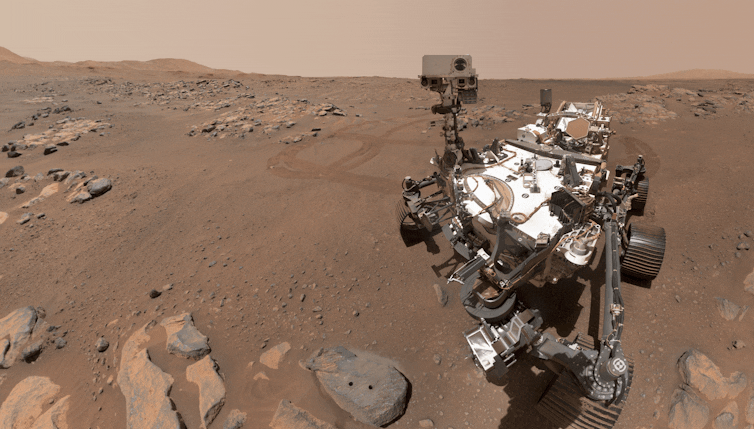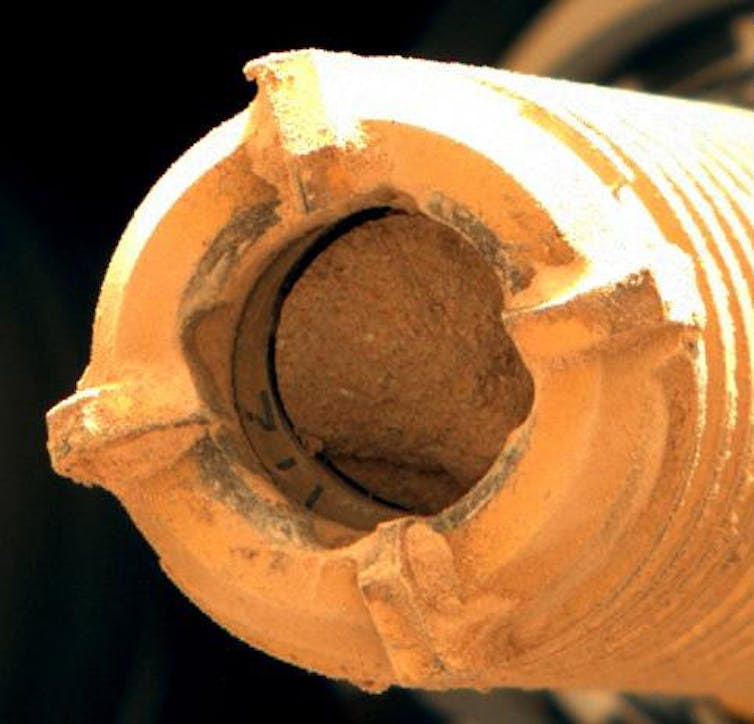Nasa to overhaul mission returning samples from Mars – here’s why it must and will go ahead
Nasa puts great emphasis on delivering what its ten-year surveys of the community propose – and it would be loath to abandon the recommendations

Estimated reading time: 10 minutes
Nasa recently announced that it is seeking new ways to complete the return to Earth of rock cores drilled by the Perseverance Rover in the Jezero Crater on Mars. This has led to some anxiety among space scientists, who view the Mars Sample Return (MSR) mission as a cornerstone of plans to explore the Solar System.
But when you consider what’s at stake, scientifically and politically, it seems highly likely that Nasa will push ahead with the mission to make it a success.
One key conclusion of the Nasa review is that MSR was established with unrealistic budget and schedules. Now it expects a cost of US$8-11 billion (£6.5-8.9 billion), having originally estimated $5.3 billion. That’s not including the investment that the European Space Agency (Esa) is making, which is probably of the order of €2 billion (£1.7 billion).
There are also concerns that the timeline for return of the drill cores to Earth may slip in to the 2040s, and therefore start holding up the even more ambitious vision for human missions to Mars.
Despite these obstacles, Nasa remains committed to MSR as one of its highest science priorities. In fact, it remains the agency’s highest priority of the decade for planetary science.
Esa is also unlikely to want to lose the scientific investment it has already made in MSR.
Huge scientific importance
So why does the space science community regard MSR as so important? Partly because the technologies are a stepping stone to future human exploration. For instance, the mission needs an ascent vehicle to launch the samples into orbit for capture by another spacecraft.

Perseverance is already doing the first key stage of this mission – drilling in Jezero Crater. This is stage one of four. The next two stages will be to gather at least some of the drilled samples and launch them on a Mars ascent vehicle into orbit for capture by Esa’s Return Orbiter. That capture in Mars orbit of a football-sized return capsule is one of the key technical challenges of MSR. Esa is taking a major part in this and leads the return orbiter development.
The final stage, assuming successful landing at the Utah Test and Training Range, is a painstaking programme of organic, geochemical and mineralogical analyses will take place under stringent conditions of containment. This stage will deploy the very best equipment that we scientists have in laboratories across the world.
But these challenging steps come at a cost, which Nasa is now proposing to reduce. For example, it may reduce the mass of an ascent vehicle. And it has already dropped a planned UK-built Fetch rover to gather up drilled samples. Even the option of using helicopters as demonstrated by Ingenuity on Mars2020 is at risk – it may be Perseverance itself that delivers the drill tubes to an ascent rocket.
But these financial savings come with a scientific cost. Fewer of the currently envisaged 30 drill cores (each of the rock cores inside the 15cm tubes are about 6cm long) would be returned in that scenario to keep the ascent vehicle light.
The actual samples from an ancient delta, and a thick lava flow that has preserved traces of alteration by hot water, being drilled in Jezero Crater have been stored on board or dropped at a depot. These precious cores represent the results of past Mars orbiter and lander missions, telling us where to land and making accurate predictions of what we would find.
Ultimately, the samples waiting for return to Earth offer our best chance in the near future of identifying traces of ancient life beyond our own planet. It’s hard to imagine a more pressing task for space science.
If Perseverance continues to work successfully – and its 12-year-old sibling rover, Curiosity, that I work on suggests it will – then we have the enticing prospect of sampling the rim of Jezero Crater. This is a window into a new type of environment in Mars exploration: the excavated deep crust where ancient microbial life may have been shielded from the harsh surface radiation.
Chinese rivalry
There is another, less scientifically driven, reason that Nasa and Esa will be keen to maintain their records of success in Mars exploration.
The Apollo programme was given impetus by cold war rivalry with the Soviet Union. Tragically, new collaboration with the Russian space agency Roscomos, and the full potential for space exploration that could be realised in a more peaceful geopolitical environment, is not currently possible.
Roscosmos could no longer mount a credible MSR mission on its own. The Esa rover Rosalind Franklin was scheduled to be launched on a Soyuz rocket in 2023, but after the Ukraine invasion that mission was quickly rethought.
China now has credible plans for a Mars Sample Return mission called Tianwen-3. The Chinese Space Agency wants to launch in 2028, with separate lander and ascent vehicle launches. If that challenging timeline can really be achieved, then samples could be returned to Earth by 2031.
In 2020, I argued that an era of new Chinese collaboration with the west could be possible. But four years on, I wonder if the history of rivalry may be repeating itself.
MSR is needed to address some of our most important questions about Mars and habitable environments beyond Earth. But it also looks set to become another symbol of rivalry in space. That said, it may be an important reason why it will indeed be a success.![]()
John Bridges, Professor of Planetary Science, University of Leicester
This article is republished from The Conversation under a Creative Commons license. Read the original article.
What's Your Reaction?
























